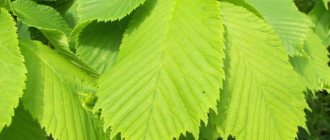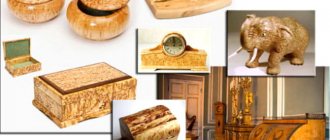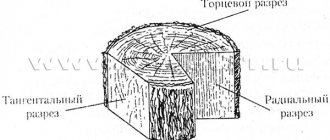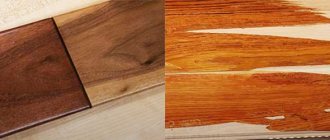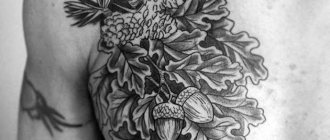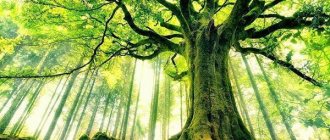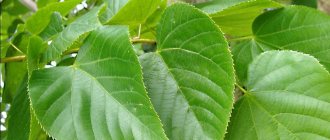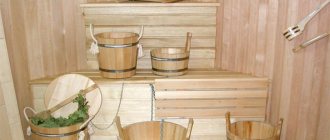General description of the Ash tree
Ash belongs to the Dicotyledonous class of the Olive family.
Despite the huge number of varieties, all trees are classified as one genus with the same name. All types of ash are similar to each other. What does ash look like? Trees with a large root system that spreads far both in width and depth. In different growing conditions, the roots of a tree look different. If the ground is dry and the groundwater is deep, then the ash tree has a clearly visible long taproot with many lateral shoots. If groundwater supplies the soil well with moisture, then the root system develops superficially and has an anchor structure. The tap root is hard to find among the others.
The tree grows well in fertile soils. It loves light, so ash can often be found in clearings or among sparse plantings.
The trunk is smooth and almost entirely covered with smooth light gray bark. Only in the lower part of the trunk can you see a network of small cracks as you approach the ground. The diameter of the tree depends on the place of growth and the age of the ash tree (some specimens live up to 300 years) and sometimes reaches a meter.
What does an ash tree look like? In the photo above you can see that the crown is formed from thick arched branches, which gives it a roundness. The branches are directed upward and have few straight shoots. The crown width is on average 15 meters; in large specimens it can reach up to 25 meters.
In spring, it is easy to determine the type of tree by the structure of the bark and by the black buds, and at the top of the tree they are much larger than on the sides of the trunk. Ash leaves appear late and are bright green.
Growing a tree on the site
The tree is well suited for creating a landscape composition due to its height and decorativeness. The variety of plant depends on the purpose for which a person plans to plant it.
Tall types are relevant when it is decided to plant a single plant, and low, horizontal or spherical types are suitable for hedges. Species with curved branches, like those of a willow, look unusual.
Place and soil for the plant
The seedling needs a flat place without shade. But at the same time, the soil here should be moist, but not swampy. The plant can tolerate drought for some time, but most varieties like moisture. Ash is considered a frost-resistant crop.
The development of a tree depends on whether the seedling is planted correctly. It is not recommended to plant the plant in saline soil; it is better to plant it in soil with an abundance of calcium. The acidity of the soil should be low.
Planting process
When purchasing planting material, you need to ensure that its roots are not exposed. It is better if they are packaged and do not dry out or are in a container.
Before planting, you need to soak the roots, saturating them with moisture. The hole for planting should be one third larger than the earthen ball of the seedling. A drainage of pebbles, coarse sand or crushed stone is laid at the bottom of the hole. The drainage layer makes up approximately ¼ of the total volume of the hole.
With proper drainage, the substrate will dry evenly. The soil in the hole will not be compacted and become salty. The drainage layer will remove moisture from the roots, so they will not rot and sour in the ground.
It is better to prepare the soil for the hole yourself, taking part of the sand and twice as much humus. It is possible to plant a tree in the following soil: sand, humus, leaf soil in a ratio of 1:2:1. The area near the trunk must be mulched with peat or wood chips up to 15 centimeters high.
Care
After planting, the ash tree should be watered regularly for the first 3–4 days. Weeding is carried out as the area with the plant becomes overgrown. The soil should be enriched in the first and last months of spring with compounds containing nitrogen. When autumn comes, you can feed the tree with universal fertilizer or nitroammophos.
In winter, the trunk should be covered with burlap. This should be done for seedlings up to three years old. When planting, the root system is planted 10–20 centimeters above the horizon. The soil will sag over time under the weight of the plant.
The tree should be watered during heat and drought, because the plant's root system can draw water from deep layers of the soil. If you flood the plant, the green ash may begin to rot. If this starts, you need to start pruning the affected branches. Diseased sections are sprinkled with crushed activated carbon. The regularity of watering varies.
Don't plant trees too close. The interval between trees should be at least five meters from each other. Otherwise, the plantings become too dense, they interfere with each other, and a shadow is formed.
Distinctive features
Ash is used in almost all areas. It is used for the manufacture of:
- medicines;
- sports equipment;
- gun butt;
- paints;
- furniture;
- hives.
The wood of the tree is strong and silky, with a purple or pink tint. It has high viscosity and does not flake. The tree has one drawback - it is that the wood is quickly subject to wormhole, so everything made from ash must be treated with an antiseptic.
Many artists use the roots of the plant, which are very similar to the wood of the olive tree, to make various products and decorations. Ash fruits are also used in cooking; they are used to prepare salads and spices. Unripe fruits are pickled and added to meat dishes.
Ash in culture
A very accurate interpretation of ash was given in his dictionary by V.I. Dal, who argued that ash means “clear,” light due to the transparent crown with numerous gaps and sparse leaves. And indeed, the crown of the plant, although lush, has an openwork structure and does not create a dense dense shadow, it looks transparent and light. The plant belongs to the Oilseed family. This relationship is due to the amazing fruits of the tree: ash seeds contain up to 30% fat, they were even preserved in the 18th century, widely used in cooking. Like small capers, the savory ash fruits were eaten as an appetizer for meat dishes. Fluffy ash not only has an attractive appearance, it also has very valuable wood, equal in beauty to mahogany and ebony. Both in ancient times and today, bows, oars, bats, spears, cues and other sports equipment and more are made from ash wood. Since ancient times, it was for this reason that ash was considered a purely male tree, and in the ancient world it was treated as a symbol of war.
Since ancient times, ash has been revered as a sacred plant that brings happiness. Among many Scandinavian peoples, ash was identified with the world tree, a symbol of eternal life and immortality, and was associated with the name of the god Odin. Among the British tribes it was a tree of rebirth, laying a connecting thread between the past and the future through the present. It is for this reason that ash was often used in various fortune telling. Runes and amulets were made from the wood of the tree. Fire lit on ash wood was endowed with special magical powers. The power emanating from fire was considered healing and beneficial, and smoke from fire was often used to cleanse evil spirits and other evil spirits. It is still customary to give an ash log at Christmas as a symbol of protection, happiness and prosperity.
Fluffy ash is in many ways similar to oak : its energy was considered universal, capable of extinguishing negative vibrations and filling the surrounding space with positive energy. That is why craftsmen so willingly make various decorations, jewelry, and household utensils from beautiful ash wood. There are many different signs associated with ash, and one of them is to attract good luck: if you happen to find a leaf of a plant with an equal number of cloves on both sides, you should save it for good luck, this is considered rare luck.
Physical properties
The physical indicators of ash are quite high. This classifies wood as durable and easy to work with. Expensive furniture and high-quality parquet are made from ash.
Strength
- The tensile strength measured in tension along all fibers of any type of wood is on average 1300 kgf/cm2. But the strength of wood across the grain can be only 1/20 of the tensile strength along the grain. And this figure is 65 kgf/cm2.
- There is another parameter - compressive strength. It also comes in two types - along and across the fibers. With increased compression along the fibers, the dimensions of the wood become shorter. The strength indicator is at least 500 kgf/cm2.
- But when compressed across the fibers, the wood becomes denser and its height decreases. After the mold is destroyed, its side parts peel off. This indicator for ash wood ranges from 90 to 99 kgf/cm2.
Thermal conductivity
- Ash that has undergone heat treatment has the following thermal conductivity index - 0.18 Kcal/mxhx °C. It is 20% lower than that of untreated wood. Quite low thermal conductivity combined with high density allows us to speak of ash wood as a tree that can retain heat. Wood is suitable for creating warm floors.
Density
- There is no average density for ash. Late wood has a density three times higher than early wood. Its level is also affected by the humidity of the tree. The optimal density of ash, whose moisture content is 12%, is measured from 680 kg/m3, and the maximum value is 750 kg/m3. This wood is a high density species.
Elasticity model
- The modulus of elasticity of type 1 ash wood under tension or compression along the fibers is practically the same. In ash, the ratio of these two indicators is 0.9. But the tensile modulus of elasticity will be different.
- This indicator is from 7 to 14 times less for ash when stretched across the grain than along it. And with radial stretching it is 1.5 times higher than with tangential stretching. The model of elasticity during torsion of the second kind in ash is 16 times less than the modulus of elasticity of the first.
Natural humidity
- The ratio of the mass of moisture contained in a specified volume of wood to the mass of the same but absolutely dry volume is called absolute humidity. When the drying process occurs (natural or artificial), the moisture from the cell membranes evaporates and the wood becomes dried out or dry.
- Moisture absorption in ash is much lower than, say, in coniferous trees. This is due to its high density. Thus, a freshly felled common ash tree has a moisture content of 36%. But for Manchurian ash, the humidity reaches 78%. When dried, cracks may form on this wood. Although it is believed that when using drying and processing technology, ash is excellent for parquet production.
Hygroscopicity
- Ash does not absorb external moisture too actively. But in a humid environment, its saturation point can cause some change in volume. That is why dense and hard ash is not suitable for interior cladding of saunas and baths.
Weight
- Pure wood cellulose, the amount of water and the anatomical structure of the tree affect the specific gravity of the wood. For common ash, these parameters may vary depending on how dry the wood is.
- Specific gravity indicators
| specific gravity of freshly cut ash | specific gravity of air-dried ash |
| average 0.92 | average 0.75 |
| limit 0.74-1.14 | limit 0.57-0.94 |
- These indicators allow us to classify ash as a first class of very heavy wood.
- Hardness and strength
- The density of ash wood at a humidity of 12% reaches 700 kg/m3.
The hardness of ash is as follows:
- end - 78.3 N/mm2;
- radial - 57.1 N/mm2;
- tangential - 65.1 N/mm2.
Wood is classified as durable, hard and heavy. Three-dimensional sculptural compositions can be made from it.
The magical properties of wood
Ash wood has the following qualities:
- Durable, not inferior in this parameter to oak.
- Beautiful, rich in texture and texture.
- Dense wood does not deform from falling heavy objects.
- Due to the same density, it is resistant to moisture.
- It has a wide range of colors - from light gray to dark brown tones.
Of course, there are also disadvantages, and you need to be aware of them:
- Ash does not tolerate moisture well. The optimal humidity for it is no more than 65%.
- He doesn't like low temperatures either. Do not store ash lumber in unheated areas.
- In order for ash to retain its attractive appearance for a long time, it must be periodically treated with an antiseptic and varnished. However, this applies to any wood.
Ash is an expensive tree. But the high price is compensated by durability and long service life.
Ash - brief botanical information
Ash (Fraxinus) belongs to the Olive family and is translated from Latin as “ash”. The plant has a fibrous root system, the crown is oblong and spreading. In most varieties, the flowers are collected in snow-white inflorescences; in some species they can be purple or burgundy.
For good pollination it is necessary to plant several plants.
Ash flowers have no scent.
The bark of the tree is smooth and light gray in color. An adult plant can reach up to 30 m, but there are species that are giants, up to 60 m in height and 40 m in width. The crown is formed from flexible branches directed upward. The fruits of the tree are long, oblong in shape, on average 5 cm. They ripen in mid-autumn and last until the end of winter.
Lionfish are rounded at the bottom and have a small notch at the top.
All types of ash tolerate severe frosts well, love a lot of light and grow well in neutral-acidic, fertile soil. The tree lives up to 350 years, the first fruiting occurs at the age of 20 years.
Color combinations
A rich palette of shades makes ash universal for any room and any style.
In addition, you can decorate the interior from ash wood without resorting to additional paints.
For small rooms and laconic styles - light shades: vanilla - will give the atmosphere freshness and lightness, which suits the interior in the Provence style; bleached - white ash seems to be created for small rooms, it will visually expand the walls, and will look very good in the minimalist style; mother-of-pearl shade with a pearl tint is the chic of a classic interior; a silver palette will add coolness; cream shade - ideal for a bedroom and looks good in the Baroque style, gold - a dark golden shade will give the interior in a classic style a special coziness.
Dark shades of ash are for more spacious rooms. The color of dark chocolate looks elegant and noble. All shades of ash are in perfect harmony with each other. Combine dark and light tones, cold and warm, and you will create your own unforgettable exclusive style.
Ash: where it grows
The tree is widespread in our country and is found in Africa, North America and the Far East. Here it can be seen in a mixed forest, next to oak, alder and maple. And also along the banks of rivers, next to lakes and artificial reservoirs.
Ash can be found both in parks and squares, and mixed forests
Where does the tree grow
This plant is often used to decorate the landscape because it looks spectacular in summer and winter. This plant is widespread throughout our country, including being planted in gardens. Typically, gardeners tend to purchase seedlings from nurseries. It is more difficult to grow an adult tree from seeds. People are especially attracted to the sight of ash trees in autumn.
Many species of this plant grow under natural conditions. Depending on the variety, the growing area also changes.
Ash can be seen in the middle zone, in the southern regions, in European countries. According to legends and myths, you can read that the tree grew in the territory of Rome and in the Scandinavian countries. The tree also grew in America, but was not as widespread. Migrant settlers from Europe took planting material with them from here and, on the contrary, brought their own seeds.
In Russia, this tree can often be found in the forest, but recently it has often been planted in alleys, parks, at the entrances to houses, and on memorial complexes.
The structure of culture
The crown is light, wide, rounded. The branches are sparse, thick, gray or gray-green in color, directed upward. The buds are black, without shine, with short hairs, rarely light brown. The apical buds are larger in size than the lateral ones. The bark is smooth, ashen with a gray tint. Mature trees have deep, narrow cracks. The trunk is cylindrical with a diameter of up to 1 m.
The leaves are complex and bloom late. The general petiole is pubescent, consists of 7-9 pointed leaves, which are arranged in pairs, opposite each other. The leaf blade has jagged edges, is smooth on top, dark green in color, fleecy underneath, painted in a light green tone. The leaves grow sparsely, so a lot of light enters through the openwork crown.
Jasna fruits
The flowers of the tree have an unusual structure. In April - early May, red-brown or light purple bunch-shaped panicles with red stamens form on leafless branches. At the same time, growth buds begin to bloom. The flowers have no perianth, and the colorful tufts are odorless.
The fruits are drooping, winged green achenes up to 4.5 cm in length, then turn brown. Ash lionfish are oblong, with a curved wing, collected in clusters of several pieces. The nut is wide, flat, and occupies almost half of the lionfish. Ripens in August. The fruits develop in November.
Ash looks especially attractive in winter. After the leaves fall, the lionfish remain and can survive on the branches throughout the cold months, decorating the leafless tree with luxurious “earrings.”
Reproduction
The tree, like the dollar tree, reproduces using seeds, cuttings and plant shoots. Ash self-sows very actively, so an unplanned seedling can be dug up and transplanted to a planned location.
Planting with seeds is practically not used in practice. It is better to buy a ready-made seedling. Obtaining a seedling from seeds is considered a rather labor-intensive process. Such cultivation is a long process. The seeds of the ash tree ripen in September - October and have the shape of a lanceolate lionfish. It can remain on the branches of an ash tree all winter.
Tree crown foliage
Ash is easily recognized by its distinctive large leaves. They grow up to 40 cm in length and are composed of 7-15 opposite elements. The length of each is from 4 to 9 cm. They are wedge-shaped with a pointed apex. In the center of the ash leaves (photo below) a vein is clearly visible; from the bottom of the leaf it protrudes as a whitish vein. The stalk has a grooved and semicircular shape.
The leaves appear quite late in the spring, and in the fall the tree often sheds them while still green from the first autumn frosts. If the autumn of the year is mild, then the leaves acquire a beautiful bright yellow color.
Ash bark and leaves: use in folk medicine
The leaves of the tree have been used in folk medicine for centuries. A variety of decoctions and infusions are prepared from the dried leaves for internal use. You can use medicinal raw materials from dried leaves separately or as part of herbal preparations. The bark of the tree also has medicinal properties, our ancestors also knew about this from ancient times. Medicinal raw materials from dry leaves and crushed bark are used in the following cases:
- In the treatment of obsessive dry cough;
- For diseases of the musculoskeletal system, for joint pain caused by arthritis, arthrosis, rheumatism;
- In the treatment of cardiovascular diseases;
- In the presence of deep non-healing wounds.
Medicinal raw materials made from leaves and bark effectively relieve inflammation, have an antiseptic effect, promote wound healing and tighten scars.
In occult medicine, it was traditionally believed that decoctions and infusions from the leaves “clarified” consciousness, that is, they enlightened thoughts. On the day of Ivan Kupala, folk healers and sorcerers went at midnight to collect medicinal herbs, and always brought with them, among other herbs and leaves. Livestock was lashed with branches to keep them healthy all year round.
Pests and diseases
Among the diseases the main ones are:
Parasitic insects. The following pests should be controlled: ash beetle, narrow-bodied emerald borer. They occupy the bark or center of the tree. They are difficult to notice, only when the beetles are flying. The passages must be opened and a tampon moistened with hexachlorane inserted into them. Then the recess is covered with cement or clay.
During the flights of the motley pine beetle, the plantings are treated with insecticides: Karate Zeon 050, Enzhio 247, Ampligo 250. You can install feeders for birds that feed on bugs. To remove the larvae of the emerald ash borer, insert swabs soaked in a hexachlorane suspension (100 g of suspension per 1 liter of water) into the tunnels under the bark and into the phloem, close the holes as indicated above, and spray the plantings with chlorophos (3%) in the last ten days of May - first ten days of June. Trees need to be inspected more often for the appearance of parasites, and sick and dry ones should be cut down.
When a Spanish fly appears that eats the crown, you need to spray it with calcium arsenate. For the caterpillar of the fat leaf roller, the moth, the corrosive woodworm, and the seed-eating weevil, use the chemicals indicated above, according to the instructions.
Why do we love ash so much?
It is not for nothing that the ash tree has been distinguished among others from time immemorial. There are many reasons for this. The first, very important one, is its beauty and nobility. Ash trees were planted where it was necessary to give a noticeable and extraordinary appearance to a city, village or town. Alleys and parks were planted with ash trees so that later, walking along them, one could enjoy their beauty. This plant has always been deservedly considered and is considered a valuable tree species.
In addition to its external beauty, ash is popular because of its resistance to frost, the negative external effects of poor environmental conditions, exhaust gases, and soil compaction. It is planted along roads.
In addition to the above-mentioned advantages, ash is widely used in folk medicine. Its decoction calms the nervous system, treats dysentery and gout. In addition, it has anti-inflammatory properties, is indispensable for rheumatism, kidney stones, arthritis and is an excellent diuretic.
In spring, ash, like birch, produces delicious sweet sap that can replace sugar for diabetics.
Ash is also loved for its wood, which is very strong and elastic. Since ancient times, warriors made weapons, bows, spears and clubs from it, which withstood military campaigns, participating in even the most difficult battles. In Rus', dishes, rockers, hoops and even wheels were made from it. Modern athletes also use sports equipment made from ash: excellent quality skis, racing oars and gymnastic bars.
Furniture made from this wood is simply magnificent. This wood is easy to process, polishes well and hardly deforms during use. Its grain pattern is very beautiful; it is not for nothing that this wood species was chosen for furniture in the Kremlin Palace.
Ash furniture
Ash is also subjected to heat treatment, which makes it resistant to the appearance of fungi and microorganisms. Heat treatment increases not only the service life of ash, but also its price. Solid ash furniture is:
- Durability.
- Environmentally friendly.
- Endurance.
- Attractive appearance.
- Functionality.
The ecological purity of ash and its resistance to deformation are used for the manufacture of children's furniture - the tree does not emit or absorb any harmful substances or fumes.
Solid ash furniture is in demand because of its beauty. Truly, painting it only spoils it. The unique wood pattern is sure to attract attention. A wardrobe, table, and chest of drawers made of ash will play a solo role in the interior. Ash furniture also looks great. The properties of wood make it possible to make furniture from it in a variety of shapes and styles. Products made from ash look expensive and solid and can decorate not only the living room, but also the office.
Furniture made from solid ash also has disadvantages, they are the same as the wood itself - it is vulnerable to bacteria and high humidity, so placing such furniture in the kitchen or bathroom, if possible, should be done carefully, after additional processing. In addition, furniture requires careful treatment; it does not tolerate wet cleaning and aggressive cleaning agents. It is also better not to approach it with a rough brush. Furniture made from ash is heavy, and this can also be called a disadvantage; it is difficult to move it from place to place. Finally, direct sunlight is contraindicated for furniture.
Ash furniture is good not only in the nursery, but also in the bedroom. This material has good energy and promotes calm and relaxation. It will create a harmonious atmosphere in the living room, bringing comfort and coziness. Solid ash walls will serve you for many years.
Origin of the name of the tree
Vladimir Dal believes that the name of the tree comes from the word “clear” (light). He explains this by saying that the crown of the tree is quite sparse, the branches are sparse and a lot of sunlight passes through the foliage.
Fraxinus (the scientific name of the tree) is translated from Latin as spear. Most likely, the plant received this name because of the shape of the leaves, thin and pointed at the end.
Types of ash
common ash
The edge of its leaf plates is characteristically carved. The height of the trunk can exceed 30 meters. While the ash tree is young, the bark of its trunk is colored greenish-gray. Over the years, it becomes dark gray, and cracks appear on its surface. The black buds are decorated with small specks.
The tree blooms in March, with foliage appearing later than flowers. This plant is a long-liver; it can live for more than three hundred years. At the same time, its wood is highly valued in the woodworking industry.
American ash
The front surface of its leaf plates is lighter in color than the back. They are similar in shape to walnut leaves, but their wedge-shaped tips are slightly more pointed. Flowering early. Buds on the branches form in the first days of April. The tree is not resistant to drought.
Black Ash
Its thick bark is dark in color. This frost-resistant plant has no flowering at all.
White ash
Its second name is “semolina ash”. This plant can reach a height of up to 20 meters. The shape of the crown can be ovoid or round. If you cut a branch, manna will appear at the cut site, which is sap that solidifies in the open air. It is because of this sap that the tree is called white. It is widely used in the pharmaceutical industry.
During flowering, spectacular white panicle-shaped inflorescences appear on the branches. Since this plant is very beautiful, it is often used as an ornamental crop for gardens, parks, etc.
Manchurian
As you can easily guess from the name, this species came to our country from Manchuria, China, Japan and Korea. Grows in forests, on nutritious soil, next to Japanese elm and Maksimovich poplar. The centenarian grows up to 350 years.
The tree is dioecious and when flowering is covered with flowers of different sexes. The variety has an erect trunk, from which the branches diverge obliquely. It reaches a height of up to 35 m, and a diameter of up to 15 m.
Manchurian ash has a specific shape and type of leaf
The bark is brown or ash-colored and has small cracks and longitudinal ribs up to 5 cm thick. Flowering begins in May and continues until September. In place of flowers, fruits appear - lionfish, which last until spring. At the ripening stage they are olive-colored.
Flat lionfish acquire a brown tint towards the end of ripening
Pennsylvanian
Pennsylvania ash, or downy ash, grows up to 25 m in height. Young branches are felty and covered with dark brown bark. The leaf blade is imparipinnate, consists of 9 leaves of a dark olive color, which by autumn do not change their color and turn green. The inflorescences are pale green, without aroma.
The species is fast growing, gaining about 50 cm in height and 30 cm in width per year. Lives up to 350 years. Ash grows in fertile soil and a sunny place. Although the variety is frost-resistant, it is not recommended to grow it in the northern regions.
The plant prefers moisture and therefore needs regular watering.
Chinese
Chinese ash, or ailanthus, is a light-loving palm-shaped plant native to Northern China. It grows throughout Russia and is widely used for landscaping populated areas. The trunk is gray-brown in color with a furrowed structure of thin bark. The leaves are large, very similar to palm trees, reaching a length of up to 60 cm. Yellow-green flowers are collected in large panicle inflorescences. Flowering begins in mid-summer. After the flowers, small red-brown fruits are formed, which stand out against the background of olive foliage.
Ash flowers emit a not entirely pleasant aroma
This type of ash is fast-growing; by the age of five years the tree reaches 5 m. Chinese ash, or the tree of the Gods, loves a lot of light and warmth. At a young age, the plant is not frost-resistant, but the frozen crown is well restored due to the rapid growth of young shoots. Thanks to its powerful roots, the plant can grow in an open, windy area.
In medicine, due to the rich chemical composition, leaves, bark, flowers and fruits are used. Fresh bark treats dysentery, flowers and foliage treat scarlet fever and diphtheria, and the fruits are prescribed for diseases of the genitourinary system. The leaves have antiviral and antimicrobial properties. The leaves are used to make decoctions that are taken to treat fever.
The bark and leaves have irritating properties; when collecting raw materials, a pustular or blistering rash may appear.
Chinese ash is unpretentious to grow and grows well in moist loamy soil.
Fluffy
This tree is the shortest of all ash varieties, its height is no more than 20 meters. Its crown is openwork, spreading, and its shoots are felt-like. Hence the name - fluffy ash. It can even grow where the soil is thoroughly flooded. The second name for downy ash is Pennsylvanian.
Most often this species grows in North America. It is absolutely unpretentious to the soil, so it grows along rivers or even in flooded openings. The leaves of the tree consist of 5-9 leaflets. Belongs to the category of frost-resistant trees.
Pennsylvania ash: growing features
Growing ash is not difficult, but certain rules must be followed. The most important condition is the correct preparation of the soil mixture, which should be poured into the planting hole. Usually it is prepared from turf soil, sand and humus in a ratio of 1:1:2. First, it is recommended to fill the bottom of the hole with drainage - sand or crushed stone.
It is necessary to pay attention to the position of the root neck. Under no circumstances should it be buried. When planting a seedling, it must be placed slightly above the soil surface. Gradually the earth will settle and the plant will take the desired position.
Another important factor is mandatory watering. In the first days, seedlings need daily and abundant watering. Later, watering is carried out in dry times at the rate of 10-15 liters of water per square meter according to the projection of the crown.
Young Pennsylvania ash grows very quickly. Often the seedlings have the shape of a bush. Caring for them involves regular and deep loosening (up to 25 cm) of the soil, mulching, and removing weeds. It is necessary to clean the trunk of top shoots, carry out sanitary pruning of the crown, and remove broken and dry branches. In the first years, young seedlings should be covered for winter. To do this, the tree trunk circle is covered with fallen leaves, and the trunk is wrapped with covering material.
Use of woody plants
Areas of use
The main advantage of the crop is its durable and flexible wood, which is widely used in the furniture industry and aircraft manufacturing, and serves as a material for the manufacture of garden tools, sports equipment, some parts of weapons, railings, window frames and parquet. Natural wood has a very beautiful light pink or yellowish tint, giving the room a unique look. In the production of musical instruments (guitars and basses), ash is chosen by both the world's largest brands and small firms.
The bark and leaves are used to make brown, blue and black dyes. Ash root has a very beautiful texture. It is used to make plywood and veneer. Beehives are made from the bark of large trees. Dry and fresh leaves are fed to livestock. Small original crafts are made from growths on wood (burls).
The buds, roots, flowers, leaves, seeds and fruits of the tree are used for medicinal purposes. In some countries, canned fruits are eaten and used as a savory seasoning for vegetables and meat. Dried juice (manna) is a valuable substitute for industrial sugar.
Ash is a favorite breed of magicians and healers. Its pure, subtle energy aligns the psyche, develops clairvoyance abilities, and can show the future. Ash amulets protect the owner from negative energy. The wood is used to make fortune-telling runes. The power of the flame of ash wood has healing properties and has a beneficial effect on the state of mind. A fire lit at Christmas promotes prosperity. Ash leaves help to attract love, scattered in the four corners of the house - they will protect against evil forces. Finding a leaf with the same number of teeth on both sides brings good luck.
Landscape design
The plant attracts designers with its elegant, slender trunk and lush crown, which creates a light and airy atmosphere in the garden. An ash tree looks spectacular when planted alone, fully revealing the beauty of the leaves and the texture of the bark. As a background plant, it emphasizes the brightness and expressiveness of many ornamental shrubs and flowering perennials.
In combined plantings it is ideally combined with larch, rowan and linden. As the trees grow, they form one lush decorative crown. Willow and maple get along well with ash. It grows poorly next to the representative of Beech trees - oak. Planting several types of ash in one area looks impressive. Weeping forms are good along the banks of artificial reservoirs, along paths, and as canopies over gazebos and benches.
You can alternate the crop with coniferous plants (spruce, pine, thuja, junipers). More contrasting compositions are obtained from ash varieties with yellow foliage and gray, silver or blue needles. The original shape of the leaves and lionfish will stand out against the background of evergreen crops.
The main thing when arranging seedlings into decorative groups is to take into account the density and diameter of the crown of an adult plant, the speed and period of its final formation. This will allow you to accurately determine the distance between the designed plants. Ash has a medium-density crown, so shade-loving, unpretentious crops are planted nearby.
Medicines and folk remedies
The substances contained in the leaves and fruits of ash have many beneficial properties. Dried raw materials are used to prepare medicinal decoctions and infusions, and added to herbal preparations. Essential oils from the fruits of the plant have a detrimental effect on fungi and bacteria. In Germany and Switzerland, antirheumatic drugs based on ash are produced. The food supplement "Revmavit" includes tree bark extract.
In folk herbal medicine, crushed bark and leaves are used: in the treatment of nervous system disorders;
- for cardiovascular diseases;
- to increase male strength;
- for liver and kidney diseases;
- in the treatment of dry cough;
- as a diuretic;
- with pneumonia;
- for joint pain;
- with bleeding;
- for dysentery.
Chronic polyarthritis is treated with crushed seeds. Apply bark or crushed fresh leaves to cuts and shallow wounds. An alcoholic tincture of the fruit is used for varicose veins. Powder from dry leaves is used for inflammation of the pancreas.
However, despite all the positive properties, the plant is poisonous. Folk remedies based on ash are contraindicated for hypertension; herbal preparations are not prescribed for severe atherosclerosis. When planting a tree in your summer cottage, keep in mind that pollen is a strong allergen that can cause contact dermatitis.
Use in landscape design
Pennsylvania ash is not a simple tree. To create a beautiful garden composition with it, you will need a creative approach. Throughout the year, fluffy ash does not lose its beautiful decorative appearance. This is explained by its openwork, regular-shaped crown and feathery foliage. Even the original fruits of the tree (lionfish) are decorations.
The plant is surprisingly resistant to urban conditions and is unpretentious in care. That is why it is often used for landscaping alleys: openwork transparent crowns and smooth trunks give a feeling of airiness. The tree looks great when planted alone on the lawn.
Ash looks no less impressive near a pond, so it can be planted near an artificial stream or pond. The tree combines very harmoniously with ornamental plants and shrubs, creating an excellent pair with larch in the foreground, creating a light, airy composition.
Interesting combinations of ash with linden, maple, and rowan. Recently, ash began to be planted in a group with coniferous trees - pine, spruce. True, in this case the trees should be placed at a distance so that these strong plants do not harm each other.
You can plant an ash tree as a background plant at the edge of the site. This solution will highlight the beauty and brightness of other perennials and shrubs. Ash is great for creating an original landscape composition in a Mediterranean style. To do this, mountain pine, junipers, and thuja columnar are planted in the foreground.
Mythological ash
This tree has been loved by man since ancient times. Many ancient people even believed that their ancestor was the ash tree. A description of this interesting judgment can be found in the poem “Works and Days” by the ancient Greek poet Hesiod. It is on the pages of his work that it is said how the ancient Greek gods found two trees: ash and alder - and created from them, respectively, a man and a woman, endowing them with body, soul, feelings and mind. Even in the paradise of Ancient Greece, ash continues to live and delight those who come to this place with its beauty.
In Lithuania, this tree symbolizes a righteous and pure life. Ash appears in Lithuanian fairy tales, legends and stories. In addition, many peoples treated ash very favorably, loving and honoring this tree. Perhaps only the oak tree surpassed him in power, but not in beauty.
The beauty of the tree and ash leaves (photo presented in the article) has long been liked by people. In ancient legends you can find myths about the involvement of ash in the appearance of people on Earth. The Scandinavian gods - Odin, Vili and Ve - created a man from ash and a woman from alder. God Odin breathed a soul into them and gave them life, the next god Vili gave them reason and taught them to move, and the last god Ve infused them with 5 senses.
After death, warriors who fell on the battlefield (in the beliefs of the ancient Scandinavians) end up in Odin’s Garden of Eden, where they continue their military work. In the middle of the promised land called Valhalla stands a huge ash tree. A goat that eats its leaves produces a full cup of honey every day instead of milk. And a deer eating its branches has an inexhaustible source of water flowing from its antlers, which flows underground.
Historians believe that ancient beliefs are closely related to the properties of white or semolina ash, which releases sweet sap from its branches when cut.
Restless Dead
Just the mention of navy sends a chill down your spine. The explanatory dictionary of the living Great Russian language, compiled by the famous scientist Vladimir Dahl, defines these mystical creatures as the dead, the dead, the departed people.
In Slavic mythology, the other world, the afterlife, is called “Nav”. And its inhabitants can either cause serious harm to people, or help in a difficult situation, or indicate where the treasure is buried. Since ancient times in Rus', when they commemorated their deceased ancestors. On the night of Maundy Thursday of Easter week, a bathhouse was specially heated for them and treats were left out. This is how people wanted to appease the spirits of the departed.
However, the Navy were not incorporeal creatures. According to popular belief, they are the Russian equivalent of zombies. The living dead could get out of their graves and wander around, terrifying living people. These are those who did not find peace after their death, who were not accepted by the afterlife.
